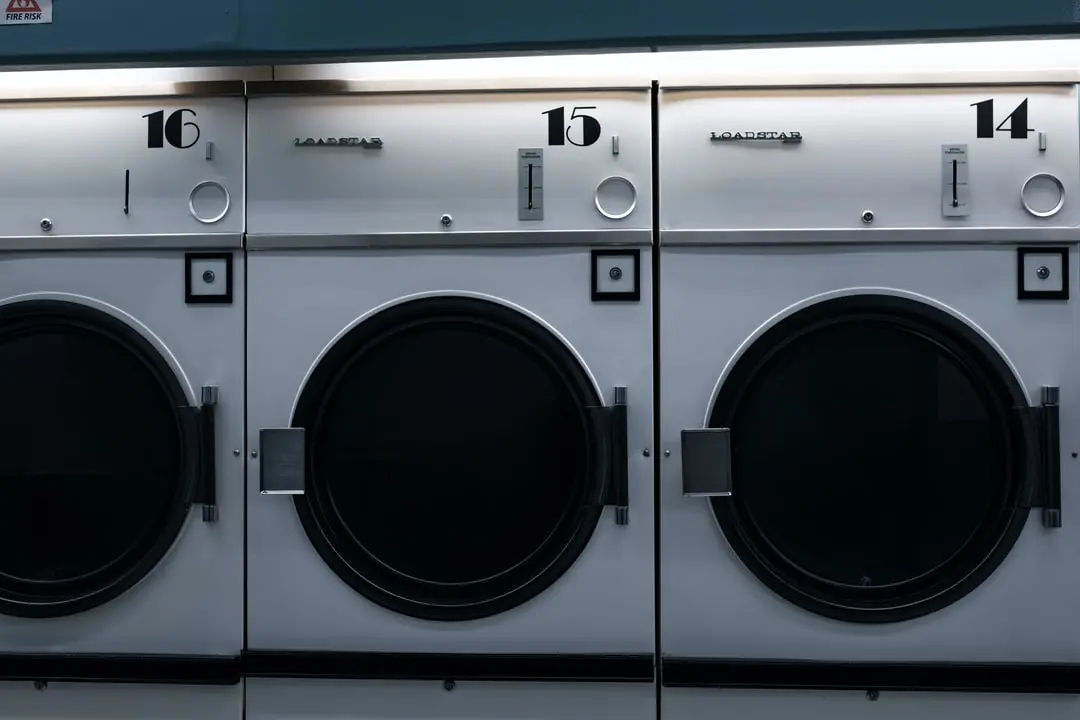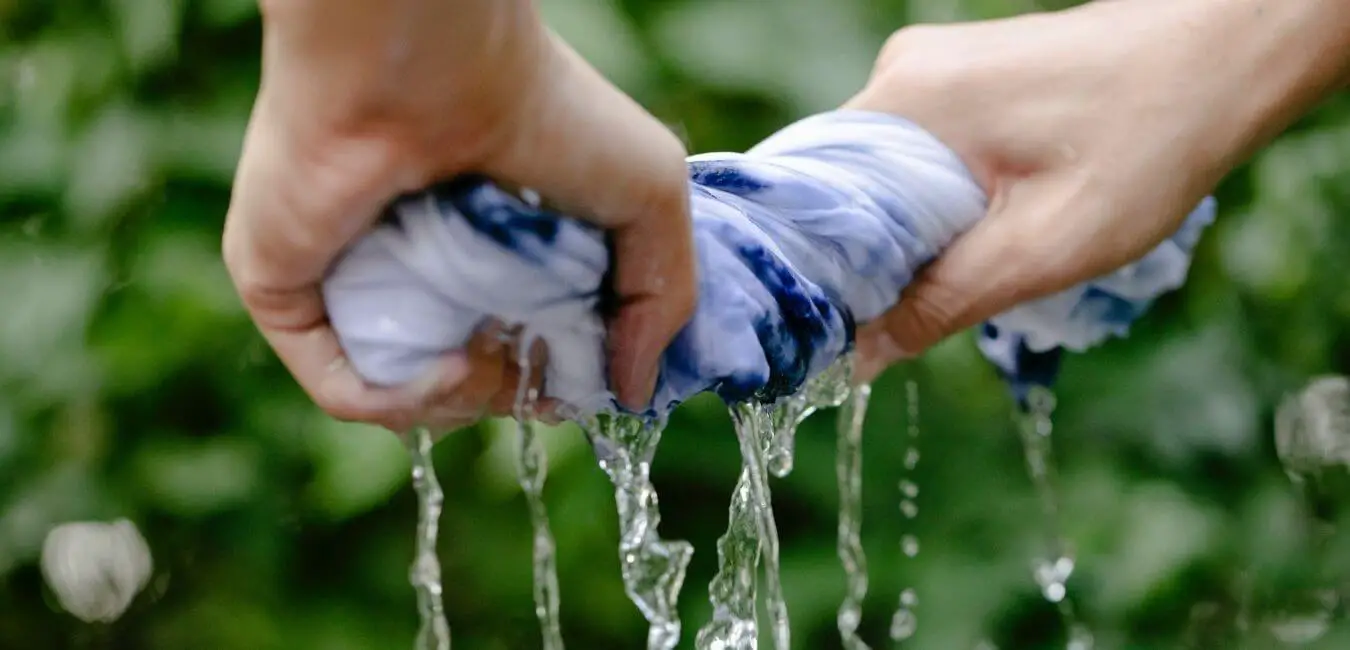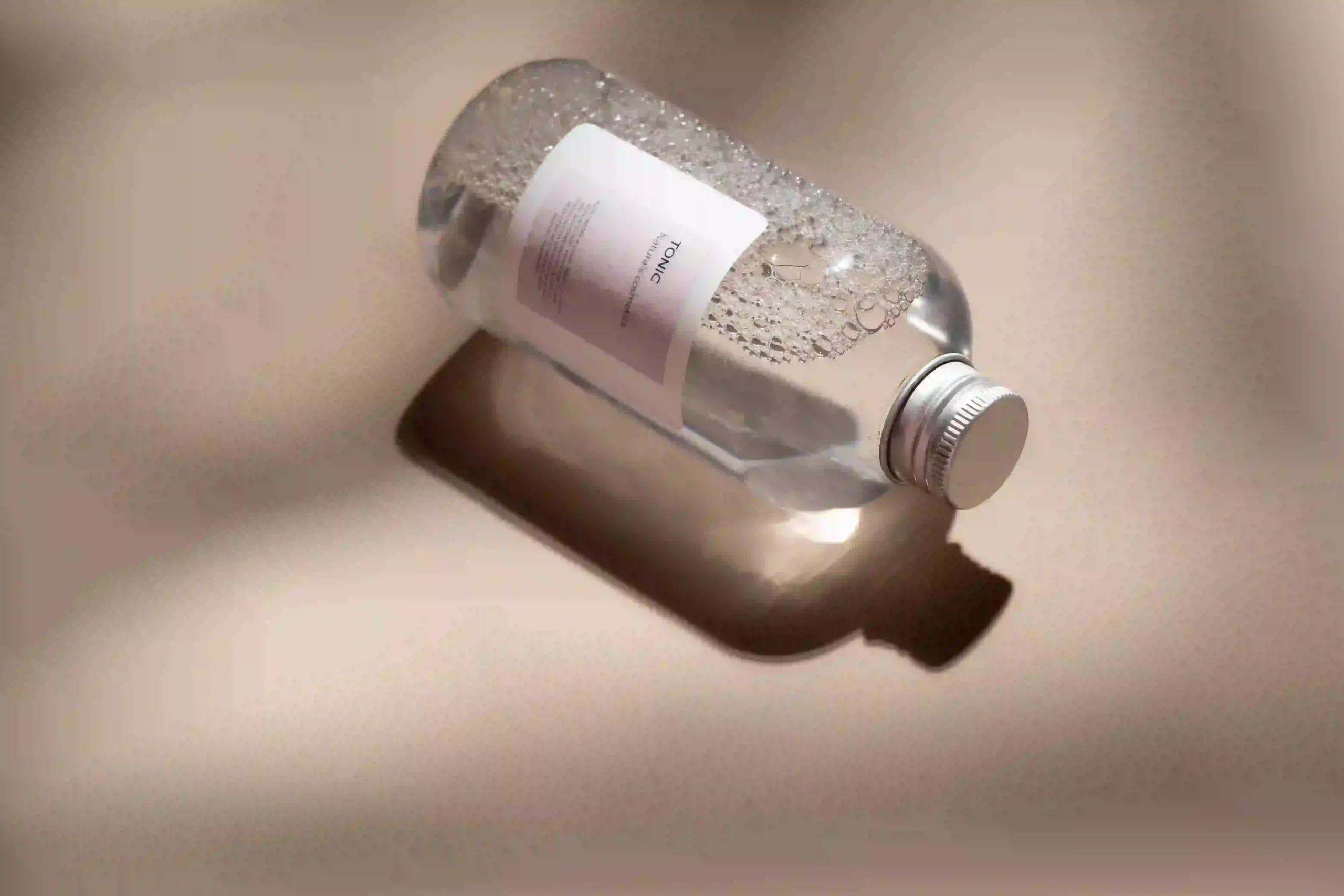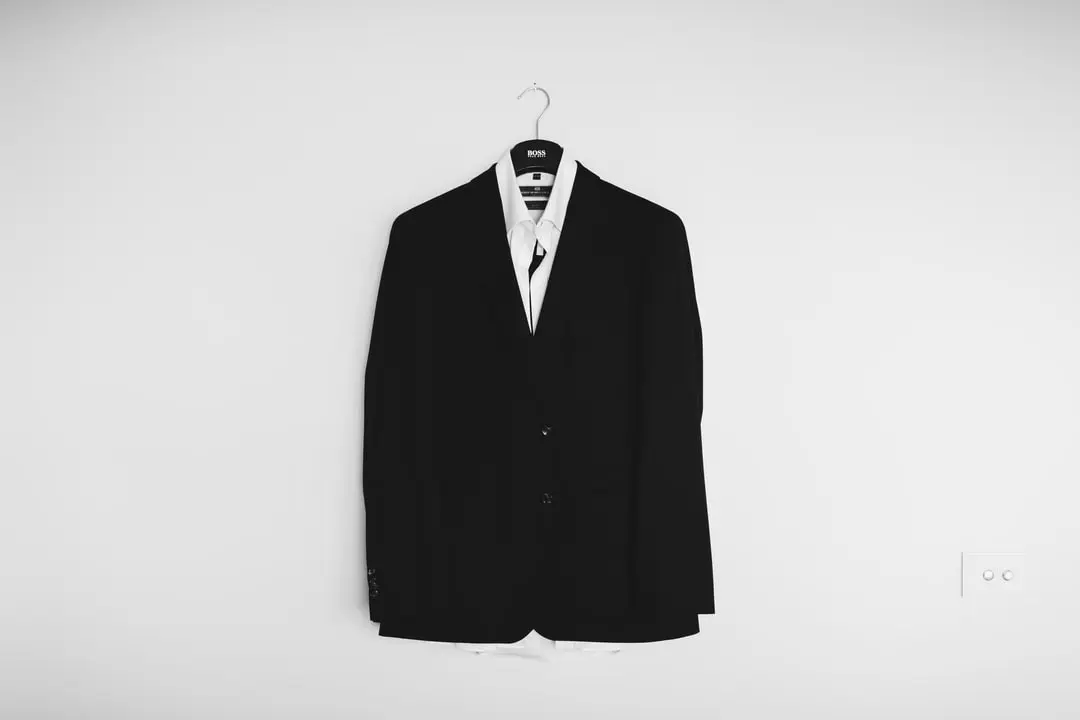Winter is finally here, and while we all enjoy the cozy nights and hot cocoa, it also brings along some challenges. One of the most frustrating tasks during this cold season is doing laundry.
It can be a real struggle to get clothes dry when there isn’t enough sunlight or warmth to aid the process. If you’re tired of waiting for your clothes to dry for hours, then you’ve come to the right place.
In this blog post, we’ll be sharing some tips and tricks on how to dry clothes quickly in winter, so you can spend less time waiting and more time enjoying the season.
So, whether you’re a student, a working professional, or a stay-at-home parent, keep reading to discover some useful hacks that’ll make your laundry day much more bearable.
Tips to Help You Dry Your Clothes Faster in Winter

I. Preparing clothes for washing
A. Avoid overfilling the washing machine
When doing your laundry, it’s easy to think that overfilling the washing machine will save you time and energy. However, this is not true. Overfilling the washing machine will only make your clothes damper at the end of the wash and will take longer to dry.
To avoid this, make sure not to squash your garments inside the washing machine. You can split your laundry into batches and do it one at a time to ensure the washing machine is not overloaded.
Doing this will allow for better water circulation, and your clothes will come out cleaner and drier, which means less time will be needed for drying. So make sure not to overfill your washing machine, and your clothes will be dry in no time.
B. Use the fastest spin program
When drying clothes in winter, using the fastest spin program on your washing machine can help reduce drying time. Before setting the controls to a super-fast spin, make sure to check your clothing to see if they can handle it.
Another spin cycle can also help remove excess water from your clothes before taking them out of the machine. Using the fastest spin cycle available will help your clothes dry faster and save you time.
So, always remember to use the fastest spin program on your machine to make the most out of your drying time.
II. Indoor drying methods
A. Use of indoor airer
One of the best ways to dry your clothes indoors during winter is by investing in a good indoor airer. Here are some tips on how to make the most of your airer:
- An indoor airer is an indispensable investment. It is one of the best ways for drying clothes indoors.
- Choose an airer that is sturdy and durable, with enough space to hang your clothes.
- Place your airer in a warm, dry room, with good ventilation. Avoid busy areas like the living room or kitchen.
- Make use of any available heat sources, such as direct sunlight or a radiator. But make sure to check if the fabrics are prone to fading in the sun.
- Space out your clothes evenly on the airer, making sure there is plenty of air to circulate between them. Clothes bunched together will take longer to dry.
- Undo zips and buttons, and pull out trouser pockets to aid the drying process.
- Check your clothes periodically to see how well they are drying. Rotate them if necessary, paying attention to areas like cuffs and underarms, which take longer to dry.
- Remove clothes from the airer once they are dry, to prevent them from becoming damp or musty.
- For delicate clothes like jumpers, consider using a drying rack with holes to allow air to circulate.
Using an indoor airer can save you money on electricity bills, and is a great way to ensure your clothes are dried safely and efficiently.
B. Hanging clothes on a drying rack near a heat source
If you don’t have a dryer, hanging your clothes on a drying rack is a great alternative. You can even speed up the process by placing the rack near a heat source. Here are some tips to keep in mind:
- If you have radiators, you can hang clothes straight on them to take advantage of the heat.
- Make sure to spread your clothes out evenly on the rack so that they get plenty of air to dry.
- Place the rack near a direct sunlight source, but be aware of fabrics that are prone to fading under the sun.
- For thicker items like jeans, make sure they have enough room and don’t touch each other while hanging.
- Check your clothes regularly to see how well they’re drying and flip them around if necessary.
By following these simple steps, you can efficiently dry your clothes on a drying rack without any hassle. Remember – a well-ventilated room is also important for quicker drying, so make sure to open a window or two.
C. Spreading clothes out evenly while hanging
When drying your clothes, it’s important to spread them out evenly to allow for better air circulation. This ensures that every part of the clothing item dries at the same speed.
Clothes that are bunched up or overlapping will take longer to dry, and may even end up with damp spots. Make sure to give your thicker items like jeans enough room to hang without touching each other.
For drying racks, it’s best to use at least two bars so that there’s plenty of space for your clothes. Don’t forget to undo zips and buttons, and pull out trouser pockets to aid in the drying process.
Keep flipping your clothes around to check how well they’re drying, and rotate any sections that may be taking longer to dry. With these simple steps, you’ll have your clothes drying evenly and efficiently in no time.
IV. Ventilation and air quality
A. Importance of a well-ventilated room
When it comes to drying your clothes quickly and efficiently in the winter months, having a well-ventilated room is crucial. Here are some reasons why it matters:
- Proper ventilation allows air to circulate and evaporate moisture from your wet clothes.
- A lack of ventilation can cause dampness and mold growth, which not only ruins your clothes but also poses health risks to you and your family.
- To ensure good ventilation, position your damp washing near an open window or in an area with good airflow. Avoid drying your clothes in busy areas as this can increase moisture levels.
- Use a dehumidifier to reduce moisture levels in the room. This will not only help your clothes dry faster but also prevent dampness and mold.
- Make sure not to overfill your drying space as this can hinder air circulation and slow down the drying process.
By following these tips, you can ensure that your clothes dry quickly and effectively in a well-ventilated room without any risk of mold or dampness.
B. Avoid drying clothes in busy areas
When it comes to drying your clothes in a hurry during winter, it’s important to avoid drying them in busy areas. There are a few reasons why this is the case.
Firstly, when clothes are hung up in busy areas, they are likely to get knocked, which can cause them to take longer to dry. Secondly, busy areas usually tend to be more humid, and this can lead to clothes taking longer to dry and even starting to smell musty. Finally, drying clothes in busy areas can be a safety hazard, especially if they are hung up in walkways where people can trip over them.
To avoid these problems, try to find quiet, well-ventilated areas to hang your clothes, such as in spare bedrooms or on a designated drying rack. If you don’t have space for a drying rack, you could consider using a dehumidifier to reduce moisture levels and speed up drying.
C. Use of a dehumidifier to reduce moisture levels
To reduce moisture levels and dry your clothes efficiently during winter, consider using a dehumidifier. Here are some benefits:
- A good quality dehumidifier can dry your clothes just as well as a tumble dryer.
- Dehumidifiers are cost-efficient and consume less energy compared to tumble dryers, helping to reduce your electricity bills.
- These devices are durable and made to last for many years.
- By using a dehumidifier, you can reduce carbon emissions and support the environment.
- Laundry dryer dehumidifiers incorporate their laundry drying mode, which maintains optimal humidity levels and help ensure clothes dry faster and more efficiently.
Overall, using a dehumidifier is a great option for drying clothes during winter, making it a more cost-efficient and environmentally friendly alternative to a tumble dryer.
V. Drying clothes quickly with towels
A. Using towels to soak moisture
When it comes to drying your clothes in winter, you may need to get creative. One simple trick is to use towels to absorb excess moisture. Here’s how to do it:
- Lay your item of clothing flat on a towel.
- Roll the towel up and twist it tightly to help absorb as much water as possible.
- Repeat with a new towel if necessary for really wet garments.
- Hang or lay the clothing flat to air dry, making sure it’s spread out evenly.
This method is particularly useful for heavier items like jeans that may take a while to dry on their own. Using towels to remove excess water can speed up the drying process and help prevent dampness from lingering on your clothes. Give it a try the next time you need to dry your laundry in a pinch.
B. Rolling wet clothes in a towel to remove excess water
Rolling your wet clothes in a towel to remove excess water is a quick and easy method to help dry your clothes faster. All you need is a large, fluffy towel and a clean surface to work on. Here’s how to do it:
- Lay your wet garment on top of your towel.
- Neatly roll up the towel, starting at one end and rolling it up tightly until the entire garment is covered.
- Apply pressure to the rolled-up towel to help absorb the excess water from your clothes.
- Unroll the towel and remove your garment.
Using this method can significantly cut down on the time it takes for your clothes to air dry. You can also place tissue paper on top of your wet clothes before rolling them in the towel for extra absorption. Give it a try and see how much faster your clothes will dry. [1][2]
C. Ironing damp clothes to help them dry and remove wrinkles
One way to quickly dry your clothes and remove wrinkles is by ironing them while they are still damp. This method works best for fabrics that may not be safe for dryer or line drying. Here are some tips to get started:
- Begin by washing your clothes as usual and then lightly dampen them with water.
- Lay the items flat on an ironing board and press them gently with a warm iron. Be sure to use the appropriate setting for the fabric type.
- Pay close attention to any areas that tend to wrinkle easily, such as collars, cuffs, and pockets.
- As you iron, the heat will absorb any remaining moisture, and the weight of the iron will help smooth out any wrinkles.
- Once finished, let the clothes hang for a few minutes to cool down and thoroughly dry off.
- If there are still some stubborn wrinkles, you can repeat the process, lightly spritzing the clothes with water before ironing.
Overall, this is a quick and simple way to dry your clothes while also getting rid of unwanted wrinkles. Just be sure to use caution when handling hot irons, and always follow the manufacturer’s instructions for your specific fabric type.
VI. Drying clothes quickly with a hairdryer
A. Using a hairdryer on a low heat setting
If you need to dry clothes quickly and you don’t have access to a dryer, a hairdryer can come in handy. Here are some tips for using a hairdryer to dry your clothes:
• Use the hairdryer on the lowest heat setting to prevent damage to the fabric.
• Keep the hairdryer at least six inches away from the wet spot to avoid overheating the fabric.
• Move the hairdryer around the surface of the clothing rather than focusing on one spot for a long time to ensure even drying.
While a hairdryer is not the ideal way to dry clothes, using it on the lowest heat setting in a pinch can help dry clothes more quickly than air drying alone. Just be sure to be careful not to overheat the fabric or hold the dryer too close.
B. Hanging clothes on a hanger
Hanging your clothes on a hanger is another great way to dry your clothes in winter when you don’t have access to a tumble dryer or outdoor drying space. Here are some tips to help you make the most of this method:
- Use a sturdy hanger that won’t bend or break under the weight of your wet clothes.
- Hang your clothes in a warm, dry area with good air circulation. This could be near a heat source, such as a radiator, or in a room with a dehumidifier to help reduce moisture levels.
- Make sure to space out your clothes on the hanger so that air can circulate around each item and they dry evenly.
- Avoid hanging clothes in a busy area where they might get knocked or brushed up against, which could cause them to take longer to dry or become wrinkled.
- For bulky or heavy items, consider using two hangers or draping them over a coat hanger to help them dry evenly.
- Hanging clothes on a hanger is a versatile method that can be used for many types of clothing, including shirts, blouses, pants, and skirts.
Overall, hanging clothes on a hanger is a simple and effective way to dry clothes in winter. It doesn’t require any special equipment or skills, and it’s a convenient way to avoid using a tumble dryer if you prefer not to. So next time you need to dry your clothes quickly, give hanging them on a hanger a try.
VII. Drying clothes outdoors in winter
A. Advantages of line drying
Line drying your clothes is not only eco-friendly, but it also has many benefits. Here are some advantages of line drying that you should know:
- Energy Conservation: Line drying your laundry uses considerably less energy than using a dryer. By switching to line drying, not only will you reduce your carbon footprint, but you will also save money on your electricity bill.
- Freshness and Odor Removal: Clothes dried in the fresh outdoor air smell better than clothes that are tumble-dried with chemical fresheners like dryer sheets. Plus, the ultraviolet rays of sunlight help to remove strong odors, which is especially useful for people with sensitive skin or allergies.
- Gentle on Clothing: Tossing clothes around in the dryer can cause wear and strain on fabrics, ruining some materials. Line drying is more gentle on fibers, helping them last longer.
- Increase Physical Activity: Hanging up laundry is a physical activity that can help burn calories. Plus, it can be done both indoors and outdoors.
- Whitening and Disinfecting: Sunlight helps bleach and disinfect clothes, making it particularly beneficial for whites and baby clothes.
- Cost-Effective: A clothesline is much cheaper to purchase and operate than a clothes dryer. Plus, with the many different types of clotheslines, you can find one that fits your budget and style.
B. Best conditions for outdoor drying
When it comes to drying your clothes outside during winter, there are a few things to keep in mind to ensure the best results. Here are some tips for the best conditions for outdoor drying:
- Look for a dry day: Avoid hanging your clothes out on damp or rainy winter days as this will prolong the drying process.
- Check the temperature: While sunny and windy days are ideal, make sure the temperature is not too extreme as this can damage some fabrics.
- Choose the right spot: Look for an area that is well-ventilated and gets plenty of sun and wind, but also offers some shade to protect your clothes from fading.
- Space out your clothes: Give your clothes plenty of space to maximize airflow and allow them to dry quickly.
- Remember to shake and fluff: Once your clothes are dry, give them a good shake or fluff to soften them up again.
By following these tips, you can enjoy the benefits of outdoor drying even during the winter months.
C. Avoiding extreme temperatures and precipitation
When it comes to drying clothes in winter, it’s important to avoid extreme temperatures and precipitation. Here are some tips to keep in mind:
- On damp, grey days, it’s best to avoid hanging clothes out to dry as the moisture has nowhere to go.
- Some fabrics, especially those lined with plastic like certain cloth diapers, should not be exposed to extreme temperatures to avoid cracking.
- Avoid drying clothes outside during snow or rain. If you prefer line drying in these conditions, opting for indoor rack drying or waiting for a drier day is your best bet.
- When using a drying rack or hanging clothes, keep them away from direct sunlight as dark-colored fabrics can fade after repeated exposure.
- If you notice that your clothes aren’t drying properly, rotate them to allow all parts to dry evenly.
- Lastly, make sure to always check the weather forecast and plan your laundry accordingly for the most efficient drying.
Conclusion
In conclusion, drying clothes quickly in winter can be a challenge, but with the right strategies and techniques, it is possible to achieve dry clothes in no time. By utilizing indoor drying racks, adjusting the thermostat or using heated airers, taking advantage of natural sunlight when available, avoiding overcrowding the drying space, and using absorbent materials like microfiber towels, you can significantly speed up the drying process. Remember to always check for any moisture before storing your clothes to prevent mold or mildew growth. With these tips in mind, you will be able to enjoy freshly dried clothes even during the coldest winter days. So go ahead and give these methods a try and say goodbye to damp laundry forever.














